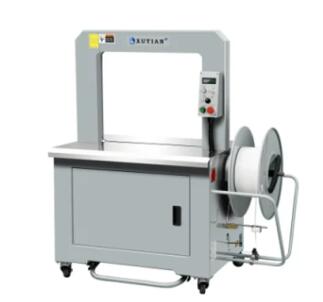Tying it All Together: The Mechanics and Applications of Strapping Machines
2023-12-13
Introduction:
In the fast-paced world of packaging and shipping, securing loads efficiently and securely is a critical aspect of the process. Strapping machines, also known as banding machines or bundlers, play a key role in achieving this by automating the strapping or banding of items. In this blog, we'll unravel the mechanics of how strapping machines work and explore the wide array of items they are used to secure in various industries.
The Mechanics of Strapping Machines:
Strapping machines operate on a simple yet highly effective principle: they apply tension to a strap or band and seal it securely around a package or load. The mechanics of strapping machines involve several key components:
1. Strap Dispensing:
Strapping machines feature a system for dispensing straps or bands. The strap material is typically made of materials like plastic (polypropylene or polyester) or metal (steel).
2. Tensioning Mechanism:
The machine includes a tensioning mechanism that tightens the strap around the load. This ensures a secure and snug fit, preventing any movement during transit.
3. Sealing or Welding:
After the tensioning process, the strapping machine uses a sealing or welding mechanism to secure the strap ends together. This creates a strong and durable seal that keeps the load intact.
4. Cutting:
Some strapping machines incorporate a cutting mechanism to trim the excess strap material, providing a neat and tidy finish.
5. Control Panel:
Strapping machines are equipped with a control panel that allows operators to adjust settings such as tension, sealing temperature (for heat-sealing models), and strap length. This user-friendly interface ensures adaptability to different packaging requirements.
6. Sensor Systems:
Advanced strapping machines often include sensor systems to detect the presence of a package, ensuring precise and efficient strapping without unnecessary waste of strap material.
Types of Strapping Machines:
1. Automatic Strapping Machines:
Automatic strapping machines are highly efficient and suitable for high-volume packaging operations. They require minimal manual intervention as they feed, tension, seal, and cut the straps automatically.
2. Semi-Automatic Strapping Machines:
Semi-automatic strapping machines require some manual involvement. Operators place the strap around the load, and the machine takes over the tensioning, sealing, and cutting processes.
3. Tabletop Strapping Machines:
Tabletop strapping machines are compact and portable, making them suitable for smaller-scale operations or businesses with limited space. They are often semi-automatic and designed for ease of use.
4. Vertical Strapping Machines:
Vertical strapping machines are designed to secure loads that are positioned vertically. They are commonly used in industries such as printing and lumber where upright loads need to be strapped.
Conclusion:
Strapping machines exemplify the marriage of technology and efficiency in the packaging and shipping industry. Their ability to securely bind diverse items, ranging from palletized loads to individual products, enhances the safety and stability of shipments. As industries continue to evolve, strapping machines evolve with them, offering innovative solutions for the challenges of securing various types of items in an ever-expanding global market.



